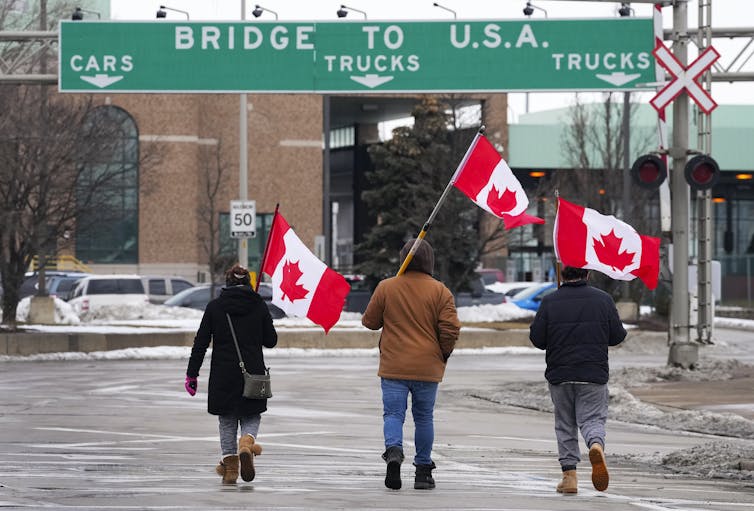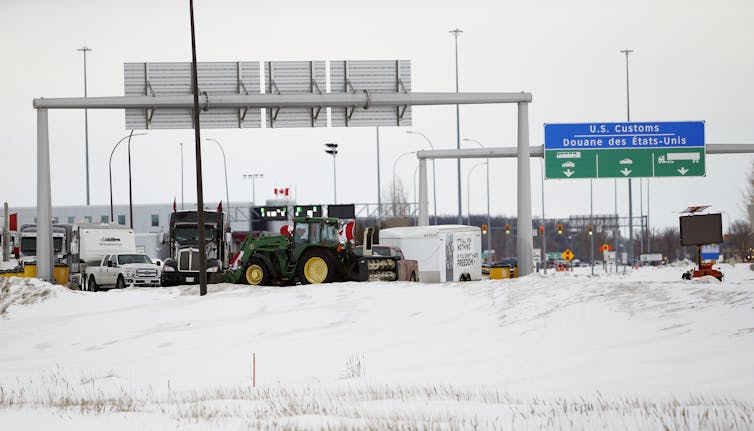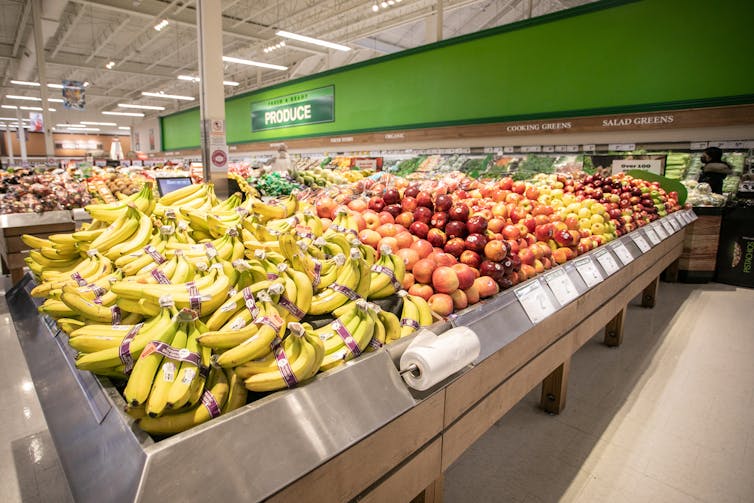
Trade between Canada and the United States was hampered for almost a week by the blockade of the Ambassador Bridge at the Windsor-Detroit border as part of the so-called freedom convoy protest.
A court injunction was secured to end the blockade on Friday, but protesters remained for two days until police finally began to clear it of people and vehicles. The bridge re-opened late Sunday night.
There are increasing tensions in other parts of Canada, and similar blockades are likely to emerge, including at the Peace Bridge in the Niagara region. The movement has also gone international.
Ontario Premier Doug Ford declared a state of emergency aimed partly at the blockade at the Ambassador Bridge, one of the busiest bridges in North America and the No. 1 international border crossing in terms of trade volume and people each day.
Ford has introduced heavy fines of up to $100,000, the confiscation of vehicles and the possibility of up to a year in prison for anyone blocking border crossings, 400-series highways, airports, ports, railways and pedestrian walkways.
The bridge accounts for nearly 30 per cent of annual trade between Canada and the U.S., amounting to a trade value of US$323 million daily. The bridge is used by more than 40,000 commuters, tourists and truck drivers crossing each day.

Trump trade tensions
Because of trade tensions between the U.S. and Canada in recent years, the blockade was particularly concerning because it prolonged those tensions.
Former U.S. president Donald Trump created trade uncertainty during the renegotiation of NAFTA that almost led to the collapse of the only free-trade agreement in North America.
In addition, the Trump administration imposed tariffs on Canadian steel and aluminum in 2018, forcing Canada to impose retaliatory tariffs on agri-food products from the U.S.
Read more: How Trump's tariffs are much bigger than Trump
Since the Trump years, the COVID-19 pandemic has disrupted bilateral trade between the two countries because of border closures and ban of international travel at the peak of the pandemic.
Bilateral trade is highly sensitive to these types of disruptions as businesses factor such risk and uncertainty into cross-border trading decisions. If the risk they are exposed to is substantial, businesses are hesitant to engage in international trade.
For instance, recent research shows that the political tensions between the U.S. and Canada during the Trump administration created significant trade uncertainty, negatively impacting bilateral agri-food trade by reducing trade value between the U.S. and Canada.

The blockade and increased trade costs
Canada and the U.S. are natural trading partners by virtue of a shared border and similar consumer tastes and values. The two countries enjoy the largest bilateral trading relationship in the world.
Annually, more than two-thirds of the US$511 billion in goods are transported by road. The Ambassador Bridge blockade increased the costs of this trade directly and indirectly.
The blockade was a direct disruption of an established trade channel, so goods scheduled to be transported had to wait or use alternative routes that were likely more expensive.
Indirectly, it also stirred uncertainty in bilateral trade relations and could have a damaging and prolonged impact. The blockade acted as an additional tariff or tax for businesses exporting or importing between the two countries.
Although there are more than 100 alternative land border crossings between the U.S. and Canada, costs can rise due to the expense and sometimes long delays spent determining and travelling to alternative routes.
The protests may also spill over to other U.S.-Canada border crossings that provide alternative routes. Already, Canadian protesters have caused border closures at Emerson, Man. and Coutts, Alta.

Alternative modes of transportation
A major alternative to land cross-border trade is seaport and air freight trade.
However, changing trade logistics from roads to ships is not an option for many companies or industries, and it’s often infeasible due to the lack of refrigerating systems in containers.
Bilateral trade via ground shipping is also more economical compared to air freight, especially if countries share a common border and have an interconnected road network.
For highly perishable agricultural products like fresh fish or fruits, a higher shipment frequency is more important due to the importance of delivery time whereas size or volume is more important for traditional product shipments, since bigger deliveries can reduce transportation costs.

Trade volume by road
The U.S. and Canada have established the most enduring and lucrative trade partnership in the world. As of 2019, Canada was the largest export destination of American goods and the third-largest supplier of imported goods in the U.S.
Among all other traded goods, agricultural and food trade is of great importance. Canada is the second-largest U.S. agricultural export market, importing up to US$22.1 billion amount goods in 2020.
The perishable nature of agri-food products makes any delay at borders costly to farmers and businesses. The bridge blockade disproportionately affected agricultural products compared to non-agricultural products.
Canada mainly imports processed foods that directly move from grocery shops to dinner tables, such as prepared foods (US$2.1 billion), fresh vegetables (US$1.8 billion), fresh fruit ($1.5 billion), snack foods ($1.3 billion) and non-alcoholic beverages (US$1.0 billion).
Highly integrated supply chains and logistical advantages allow both countries to be strong trade partners in agri-food trade by ensuring the timely delivery of fresh foods and retail-ready goods.
Sectors and regions hard hit
Geographically, border blockades likely have a bigger impact on U.S. farming states with economies that are highly dependent on exporting to Canada, including North Dakota, Michigan, Ohio, Oregon, South Dakota and Montana.
Similarly, Canadian provinces such as Prince Edward Island, Manitoba and Saskatchewan that are somewhat more dependent on primary or non-processed agri-food products, including grains, will also suffer heavily from border blockades.

The automobile industry across the U.S. and Canada felt the brunt of the Ambassador Bridge protest as major producers such as Toyota, Ford and General Motors closed down production plants. The auto industry sector in Canada and the U.S. is highly dependent on the North American supply chain in which different auto parts are produced across borders.
Rising inflation in Canada and the U.S., triggered mostly by COVID-19 and climate change disruptions to supply chains, makes border blockades a major concern.
If not addressed speedily, blockades will cause food prices to soar even higher given the rise in general inflation is already expected to significantly impact food prices.
It may appear that border blockades are purely a Canadian political issue, but since it constitutes a barrier to two-way trade between the U.S. and Canada, it has implications for both countries. The integrated supply chain across both countries will be disrupted.
That’s why the U.S. offered its assistance in ending the blockade at the Ambassador Bridge.
The Canadian government needs to work with the U.S. to end border blockades, particularly since Canadian protesters are being supported politically and financially by right-wing politicians and media in the U.S.
Sylvanus Kwaku Afesorgbor receives funding from the Ontario Ministry of Agricultural and Rural Affairs (OMAFRA).
Sunghun Lim receives funding from the USDA National Institute of Food and Agriculture (USDA-NIFA).
This article was originally published on The Conversation. Read the original article.







